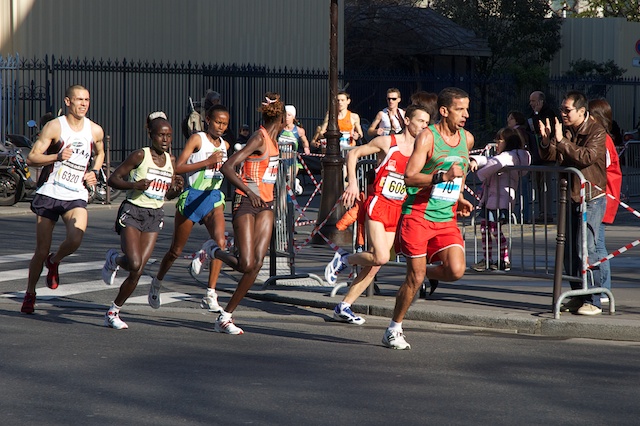How well do we perform?
This is the classic competition that occurs in every area. How fast do you run 100 meters? How high and how long do you jump? How good are you in architecture?
Without comparison and measurement, sometimes in competition with others, we have a hard time to evaluate our performance and our progress.
How to measure performance?
If you are practicing track & field, you can always measure your performance when training towards the clock or a measuring tape. For architecture we have to find another way to measure our performance.
One approach is to look how process improvement is done, due to the fact that we are measuring something that is process oriented.
A common standard for process measurement is CMMI that was developed by Carnegie Mellon University in early 2000. Among other things, it is used for measuring software development and could therefore be relevant for enterprise architecture.
The Capability Maturity Model Integration (CMMI) uses five different levels to measure maturity. They are: Initial, Repeatable, Defined, Quantitatively Managed, Optimizing. So my suggestion is to use the approach from CMMI to develop a set of levels for maturity, i.e. a staircase where you have to be on one level until you can go up to the next level.
Which capabilities are needed to be measured?
With architecture you have to be good in more than one area to be successful. Compare this to decathlon were you have have good in all of the events to get high points and nominated to the title "World´s greatest athlete".
The events include in decathlon are: 100 metres, long jump, shot put, high jump, 400 metres, 110 metres hurdles, discus throw, pole vault , javelin throw and finally 1500 metres.
None of these track & field events are valid for those running as World's greatest enterprise architect. Instead we have to focus on what's important to success with Enterprise Architecture. The CMMI is not detailed enough to use for EA so we have to develop some other means to measure.
An example of relevant areas for enterprise architecture are:
- Architecture process
- Architecture results and documentation
- Business alignment
- Business involvement
- Architecture governance
- Management involvement
- Architecture communication
In order to succeed with enterprise architecture in an organization, you have to be reasonable good in each area. Like a decathlon athlete, you have to be able to throw a javelin as well as an enterprise architect need to communicate the architecture.
- To the left is an example of an architecture maturity model for a fictive company. The example is derived from Capgemini model and other consultancy firms uses a similar approach.
The important lesson is to anchor the areas of evaluation and the different levels with the sponsor before starting measuring performance.
With a set of standard questions is it fairly simple to measure the performance and set the existing levels for each area.
What this chart doesn't cover is how good you want to be. Do you want to win the olympics or just finalize a sprint triathlon? Is your ambition to climb Mount Everest or just reaching the top of Kebnekaise (at 2133m above sea-level)?
How to set your level of ambition for enterprise architecture will be the topic for the next article - What's good enough?

